This is a list of the most notable films produced in the Cinema of Germany in 1944.
This is a list of the most notable films produced in the Cinema of Germany in 1944.

Robert Siodmak was a German film director who also worked in the United States. He is best remembered as a thriller specialist and for a series of films noir he made in the 1940s, such as The Killers (1946).

The 1940s was a decade that began on January 1, 1940, and ended on December 31, 1949.
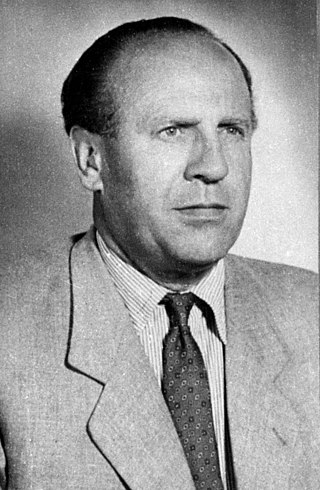
Oskar Schindler was a German industrialist, humanitarian, and member of the Nazi Party who is credited with saving the lives of 1,200 Jews during the Holocaust by employing them in his enamelware and ammunitions factories in occupied Poland and the Protectorate of Bohemia and Moravia. He is the subject of the 1982 novel Schindler's Ark and its 1993 film adaptation, Schindler's List, which reflected his life as an opportunist initially motivated by profit who came to show extraordinary initiative, tenacity, courage, and dedication in saving his Jewish employees' lives.

On 10 June 1944, four days after D-Day, the village of Oradour-sur-Glane in Haute-Vienne in Nazi-occupied France was destroyed when 643 civilians, including non-combatant men, women, and children, were massacred by a German Waffen-SS company as collective punishment for Resistance activity in the area including the capture and subsequent execution of Waffen SS Sturmbannfuhrer Helmut Kämpfe, who an informant claimed had been burned alive in front of an audience. Kämpfe was a highly decorated commander in the 2nd SS Panzer Division Das Reich.
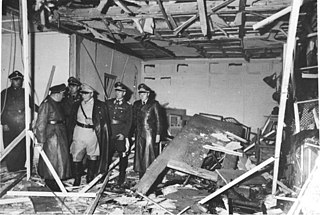
The 20 July plot was a failed attempt to assassinate Adolf Hitler, the chancellor and leader of Nazi Germany, and overthrow the Nazi regime on 20 July 1944. The plotters were part of the German resistance, mainly composed of Wehrmacht officers. The leader of the conspiracy, Claus von Stauffenberg, tried to kill Hitler by detonating an explosive hidden in a briefcase. However, due to the location of the bomb at the time of detonation, the blast only dealt Hitler minor injuries. The planners' subsequent coup attempt also failed and resulted in a purge of the Wehrmacht.

Douglas Sirk was a German film director best known for his work in Hollywood melodramas of the 1950s. However, he also directed comedies, westerns, and war films. Sirk started his career in Germany as a stage and screen director, but he left for Hollywood in 1937 after his Jewish wife was persecuted by the Nazis.
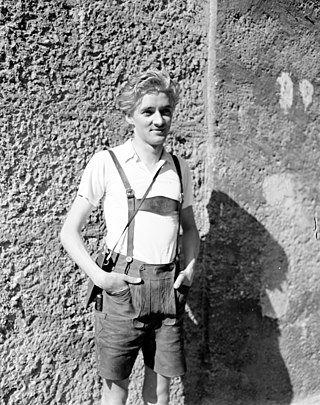
Oskar Werner was an Austrian stage and cinema actor whose prominent roles include two 1965 films, The Spy Who Came In from the Cold and Ship of Fools. Other notable films include Decision Before Dawn (1951), Jules and Jim (1962), Fahrenheit 451 (1966), The Shoes of the Fisherman (1968) and Voyage of the Damned (1976).
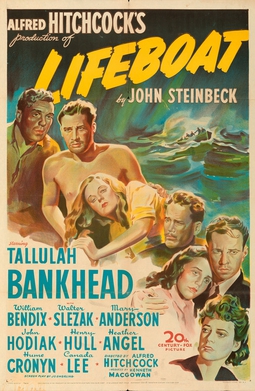
Lifeboat is a 1944 American survival film directed by Alfred Hitchcock from a story by John Steinbeck. It stars Tallulah Bankhead and William Bendix, alongside Walter Slezak, Mary Anderson, John Hodiak, Henry Hull, Heather Angel, Hume Cronyn and Canada Lee. The film is set entirely on a lifeboat launched from a passenger vessel torpedoed and sunk by a Nazi U-boat.

The Warsaw Uprising, shortly after the war also known as the August Uprising, was a major World War II operation by the Polish underground resistance to liberate Warsaw from German occupation. It occurred in the summer of 1944, and it was led by the Polish resistance Home Army. The uprising was timed to coincide with the retreat of the German forces from Poland ahead of the Soviet advance. While approaching the eastern suburbs of the city, the Red Army halted combat operations, enabling the Germans to regroup and defeat the Polish resistance and to destroy the city in retaliation. The Uprising was fought for 63 days with little outside support. It was the single largest military effort taken by any European resistance movement during World War II.
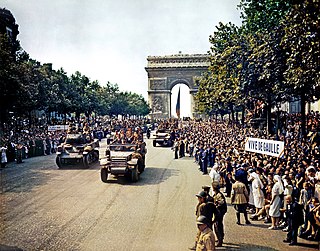
The liberation of Paris was a battle that took place during World War II from 19 August 1944 until the German garrison surrendered the French capital on 25 August 1944. Paris had been occupied by Nazi Germany since the signing of the Armistice of 22 June 1940, after which the Wehrmacht occupied northern and western France.
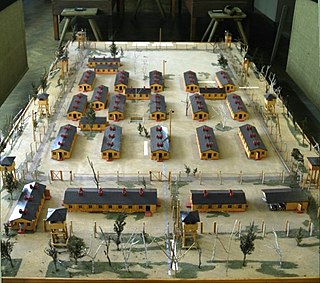
Stalag Luft III was a Luftwaffe-run prisoner-of-war (POW) camp during the Second World War, which held captured Western Allied air force personnel.

Agfacolor was the name of a series of color film products made by Agfa of Germany. The first Agfacolor, introduced in 1932, was a film-based version of their Agfa-Farbenplatte, a "screen plate" product similar to the French Autochrome. In late 1936, Agfa introduced Agfacolor Neu, a pioneering color film of the general type still in use today. The new Agfacolor was originally a reversal film used for making "slides", home movies and short documentaries. By 1939, it had also been adapted into a negative film and a print film for use by the German motion picture industry. After World War II, the Agfacolor brand was applied to several varieties of color negative film for still photography, in which the negatives were used to make color prints on paper. The reversal film was then marketed as Agfachrome. These films use Color Developing Agent 1 in their color developer.

The military history of Greece during World War II began on 28 October 1940, when the Italian Army invaded Greece from Albania, beginning the Greco-Italian War. The Greek Army temporarily halted the invasion and pushed the Italians back into Albania. The Greek successes forced Nazi Germany to intervene. The Germans invaded Greece and Yugoslavia on 6 April 1941, and overran both countries within a month, despite British aid to Greece in the form of an expeditionary corps. The conquest of Greece was completed in May with the capture of Crete from the air, although the Fallschirmjäger suffered such extensive casualties in this operation that the Oberkommando der Wehrmacht abandoned large-scale airborne operations for the remainder of the war. The German diversion of resources in the Balkans is also considered by some historians to have delayed the launch of the invasion of the Soviet Union by a critical month, which proved disastrous when the German Army failed to take Moscow.
Hans Dreier was a German motion picture art director. He was Paramount Pictures' supervising art director from 1927 until his retirement in 1950, when he was succeeded by Hal Pereira.

Nazism made extensive use of the cinema throughout its history. Though it was a relatively new technology, the Nazi Party established a film department soon after it rose to power in Germany. Both Adolf Hitler and his propaganda minister Joseph Goebbels used the many Nazi films to promote the party ideology and show their influence in the burgeoning art form, which was an object of personal fascination for Hitler. The Nazis valued film as a propaganda instrument of enormous power, courting the masses by means of slogans that were aimed directly at the instincts and emotions of the people. The Department of Film also used the economic power of German moviegoers to influence the international film market. This resulted in almost all Hollywood producers censoring films critical of Nazism during the 1930s, as well as showing news shorts produced by the Nazis in American theaters.

RAF Lavenham is a former World War II airfield in England. The field is located 7 miles (11 km) N of Sudbury in Suffolk, near the village of Alpheton.

During World War II, the Lapland War saw fighting between Finland and Nazi Germany – effectively from September to November 1944 – in Finland's northernmost region, Lapland. Though the Finns and the Germans had been fighting together against the Soviet Union since 1941 during the Continuation War (1941–1944), peace negotiations between the Finnish government and the Allies of World War II had been conducted intermittently during 1943–1944, but no agreement had been reached. The Moscow Armistice, signed on 19 September 1944, demanded that Finland break diplomatic ties with Germany and expel or disarm any German soldiers remaining in Finland.
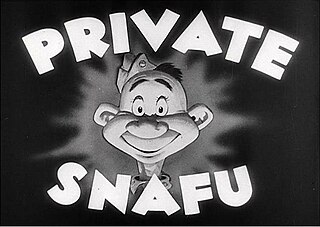
A Lecture on Camouflage is a 1944 American animated film directed by Chuck Jones, a Private Snafu cartoon short made for the troops during World War II.

1944 is a 2015 Estonian war drama film directed by Elmo Nüganen. The film first premiered in February 2015 in Berlin, Germany, before its release in Estonia and other Northern European countries. It was selected as the Estonian entry for the Best Foreign Language Film at the 88th Academy Awards but it was not nominated.